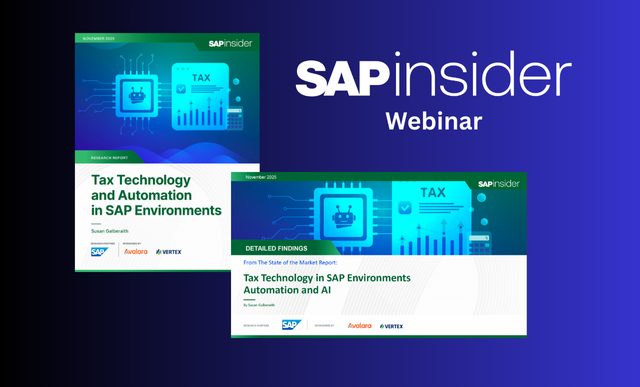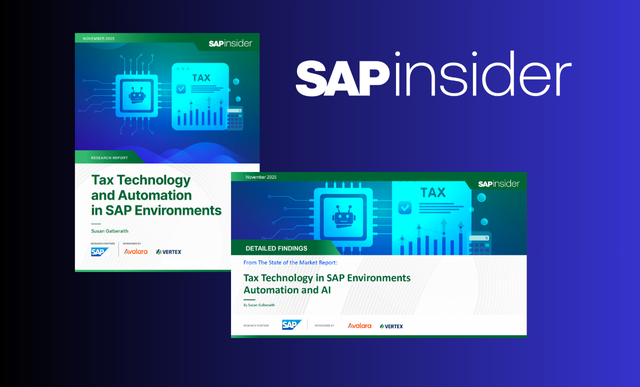A Discussion on Thomson Reuters’ Approach to Tax Management
Meet the Authors
Key Takeaways
Thomson Reuters emphasizes that compliance should be embedded directly into business operations to enhance efficiency and reduce manual tasks, integrating tax management into platforms like SAP S/4HANA.
Creating a 'network of networks' for better connectivity between compliance systems and ERP platforms is essential for managing complex tax requirements and streamlining workflows.
Leveraging data-driven insights through advanced tools, such as generative AI assistants, can significantly improve decision-making in compliance management, allowing organizations to proactively identify risks and inefficiencies.
In a recent conversation, Ray Grove, SVP Global Head of Product at Thomson Reuters, discussed the company’s approach to the evolving tax landscape. He emphasized that compliance today goes beyond simply adhering to regulations—it needs to be integrated into business operations, connected across different systems, and enhanced through data-driven insights. These three elements—embedded, connected, and intelligent—form the basis of Thomson Reuters’ strategy for enterprise compliance.
As regulatory requirements grow more complex, organizations are under increasing pressure to manage compliance more efficiently. Ray explained how Thomson Reuters is working with companies to integrate compliance solutions within existing workflows, improve connectivity between platforms, and use data to support better decision-making.
Embedded: Making Compliance Part of Business Operations
Ray highlighted the importance of embedding tax compliance directly into business processes to reduce manual tasks and improve efficiency. “Compliance should not be a separate function that interrupts regular operations,” he said. “It needs to be woven into everyday processes.”
Explore related questions
Thomson Reuters is focusing on enabling companies to embed tax management into platforms like SAP S/4HANA, widely used in finance and operations. This API-driven approach allows compliance tools to function within these platforms, helping users interact with them without leaving their usual systems. By embedding tax management tools into workflows, businesses can streamline processes and ensure regulatory requirements are met without unnecessary disruption.
Connected: Creating a Network of Systems
Alongside embedding compliance into operations, connectivity between systems is equally crucial in managing today’s complex tax requirements. Ray discussed the need for greater connectivity between systems. He explained the vision of creating a “network of networks” where different compliance systems, ERP platforms, and external tools can connect seamlessly. This would allow companies to manage compliance more easily across multiple platforms.
Thomson Reuters, through its subsidiary Pagero, is working toward this goal by exploring collaboration with other business networks, such as SAP Business Network. The objective is to improve workflows, share data more effectively, and help customers manage compliance across interconnected ecosystems.
Intelligent: Using Data to Improve Compliance
Ray emphasized the role of intelligence in modern tax management. “Data is key,” he noted. “It’s not enough to simply automate compliance processes—organizations need to use the data to make better decisions.”
Thomson Reuters has developed tools, such as generative AI assistants, to help companies comply with regulations while gaining valuable insights from their data. These tools streamline workflows and offer quick, data-backed answers to support decision-making. By investing in AI-driven solutions, organizations can proactively identify risks and inefficiencies before they become significant problems, helping them stay ahead of regulatory changes.
Conclusion
Thomson Reuters is adapting its tax management strategy by focusing on embedding tax processes into business operations, improving connectivity between platforms, and leveraging intelligent data insights. These elements—embedded, connected, and intelligent—are key components of its approach to helping companies manage compliance in an increasingly complex regulatory environment.
As Ray explained, “The future of compliance lies in creating an ecosystem where tax processes are seamlessly integrated into business operations, data is connected across systems, and intelligent insights drive decision-making.” As the regulatory landscape evolves, businesses need to ensure their compliance strategies are not just reactive but forward-looking, integrating technology to drive both efficiency and regulatory adherence.






